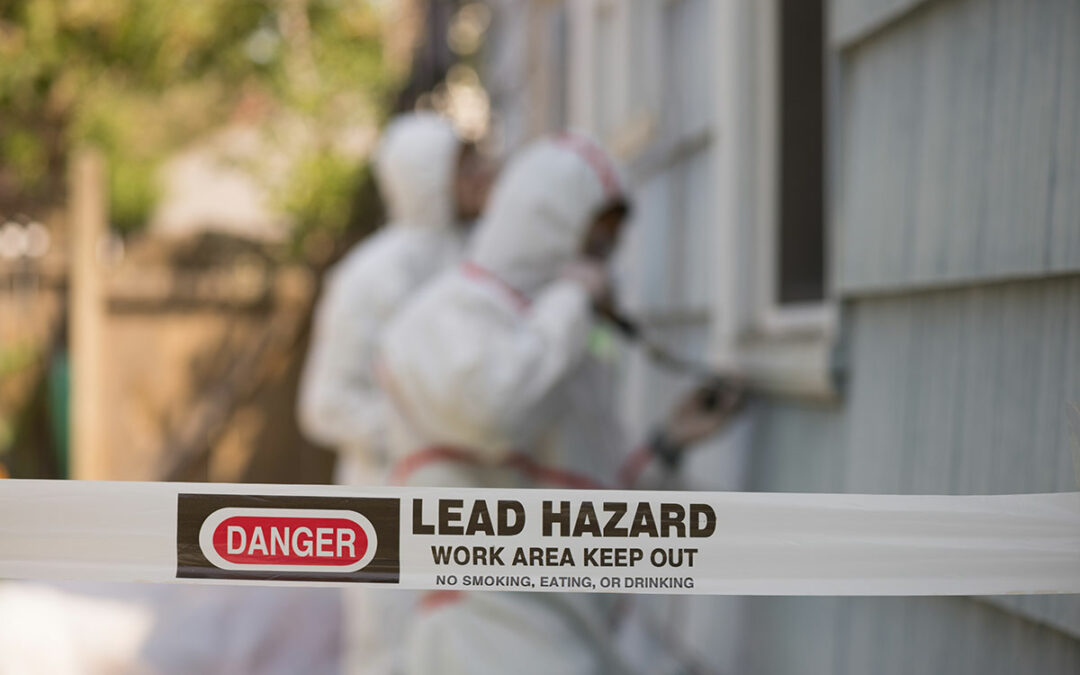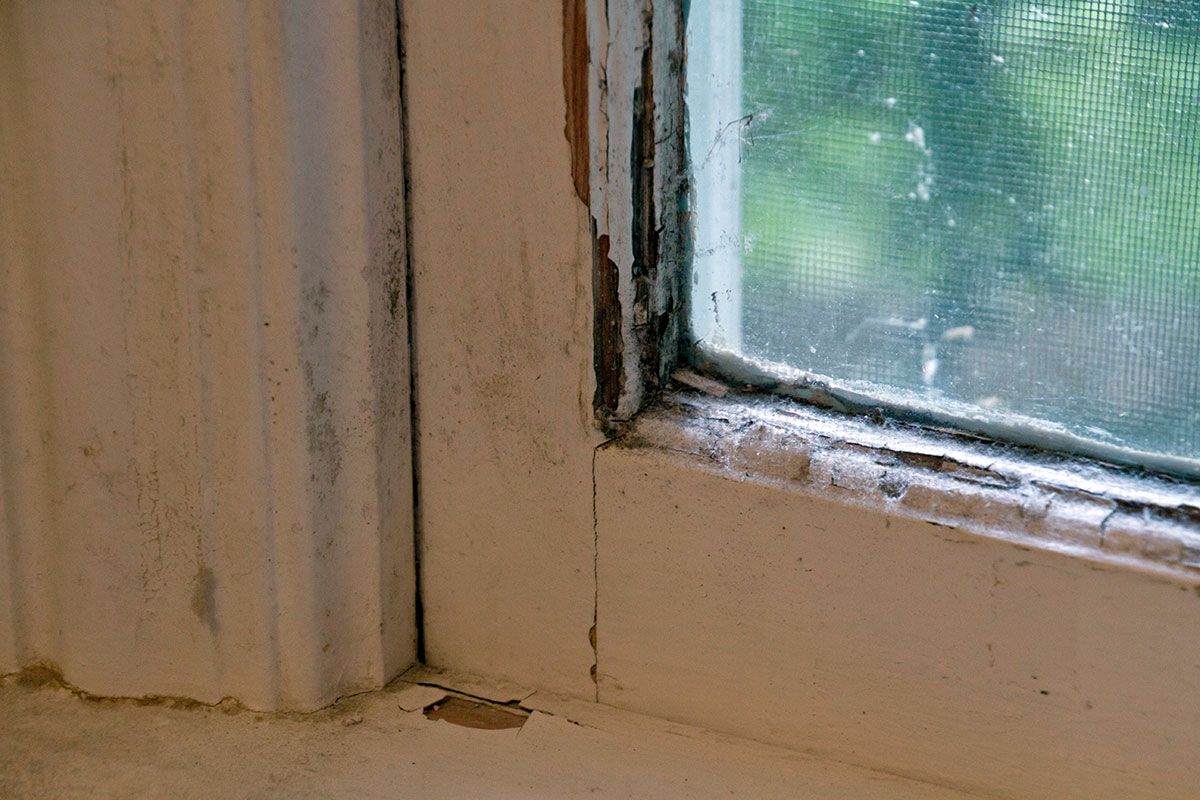Lead paint, once a common component used in homes across the United States, continues to present serious health risks, particularly to young children. Throughout my experience as a lead inspector, I have witnessed firsthand the impact of lead exposure on families.
Recognizing Potential Sources of Lead Exposure in Your Home
Lead-based paint becomes a significant risk when it is damaged or disturbed. Homes built before 1978 are particularly likely to contain lead paint, which can be found on walls, ceilings, woodwork, doors, and window frames.
The Hidden Dangers of Lead-Based Paint
Older homes can harbor hidden dangers in the form of lead-based paint. When this type of paint deteriorates or is disturbed during renovations, it can release hazardous lead particles into the air and dust. These particles pose a significant health risk, especially to young children who are more likely to ingest or inhale them due to their frequent hand-to-mouth behaviors and natural curiosity. The hazardous nature of lead paint stems from its propensity to release harmful particles into the environment as it breaks down. In older homes where lead paint was more commonly used, any form of disruption to the integrity of this paint can lead to the distribution of lead-contaminated dust, making lead based paint testing an essential precaution.
Children at High Risk from Lead Exposure
Young children are especially vulnerable to the risks posed by lead-based paint due to their natural curiosity and frequent hand-to-mouth behaviors. These tendencies increase their likelihood of ingesting or inhaling harmful lead particles released from deteriorating or disturbed lead paint.
A Real-Life Case Highlighting the Importance of Lead Paint Testing
We once received a request for lead-based paint testing from a concerned family as their infant had recently been found to have elevated blood lead levels. When we assessed the home, we actually found the culprit to be an old standalone bathtub where the baby would always take their bath. The glazing of the bathtub was found to have extremely high levels of lead by way of our XRF lead analysis and was seen to be chipping at the base of the tub.
Since the baby would take all of its baths in this tub, the lead contaminated water was being drank in small amounts with every bath. If we had not discovered this issue and had their child continued to bathe in this tub, the negative health effects could have been lifelong complications to the nervous system and organs. Lead poisoning is a very dangerous threat to children and it is crucial for parents to understand the potential threats of lead paint on children.
Lead Paint Hazards: Safeguarding Your Home
Doors and Windows: Major Risk Points
Doors and windows represent major risk points for lead paint exposure in older homes. These areas experience frequent use and movement, causing friction that can wear down lead-based paint over time. As the paint deteriorates, hazardous lead dust can be emitted into your home environment, posing a severe health risk to your family.
Regular inspections and maintenance of doors, windows, and their surrounding areas are crucial to identify and address potential lead hazards. Look for signs of chipping, cracking, or peeling paint, as well as visible dust accumulation. Implementing lead safe practices during any repairs or renovations involving these areas is essential to prevent the disturbance and spread of lead dust.
Homeowner’s Checklist: Identifying Friction Points
To identify potential friction points and lead hazards in your home, carefully inspect the following areas:
- Door jambs and frames
- Window sills, tracks, and casings
- Areas around hinges and handles
- Trim and molding near doors and windows
- Walls and surfaces adjacent to doors and windows
If you notice any deteriorating paint, dust accumulation, or signs of wear in these high-friction zones, it’s essential to seek professional lead risk assessment and lead based paint testing services. This will allow you to take the necessary steps to address any lead hazards and protect your family’s health and well-being.
By incorporating regular maintenance, inspections, and lead safe practices, you can mitigate the risks associated with lead-based paint on doors and windows. Don’t hesitate to consult with certified professionals for guidance on lead risk assessment, testing, and implementing effective lead safe practices in your home.
The Impact of Aging and Deteriorating Paint
As paint ages, it inevitably begins to crack, chip, and deteriorate. This natural aging process is accelerated in environments with high humidity or fluctuating temperatures, common in many regions. The resulting paint deterioration not only detracts from the aesthetic value of a home but also increases the risk of lead exposure.
Aging lead-based paint can release particles into the air and blend with household dust, which is easily inhaled or ingested by young children. Such scenarios underscore the need for regular home inspections by certified lead testing professionals, especially in older homes.
Why Children Are at Greater Risk from Lead Exposure
Children, particularly toddlers, are inherently more vulnerable to lead poisoning due to their developmental stage and behavioral patterns.
Behavioral Patterns Increasing Risk in Toddlers
Toddlers are naturally curious and tend to explore the world with their hands and mouths, which puts them at particularly high risk of lead exposure in environments where lead-based paint is present. This age group is often on the ground, crawling, which means their hands—and often their toys—come into regular contact with dust and soil that may be contaminated with lead.
A common behavior is the frequent touching of surfaces followed by hand-to-mouth actions. This activity dramatically increases the risk of ingesting lead dust. During a home visit, I observed a toddler playing near an old window sill, a typical location where lead paint is often found. Despite the paint not being visibly deteriorated, a lead dust test later revealed high levels of contamination on the surfaces where the child was playing.
Lead Paint’s Hidden Threat Through Household Dust and Soil
Lead paint becomes a significant health hazard not only when it deteriorates but also as it contributes to the contamination of household dust and the surrounding soil. This contamination can occur when exterior lead-based paint weathers and the chips and dust settle in the soil around the home. Children playing outside can easily transfer contaminated soil into their mouths and homes.
In urban settings, the risk extends to public playgrounds or gardens where soil contamination from surrounding old buildings can be significant. A case that illustrates this point involved a community garden located next to a series of older apartment buildings. Testing revealed that the soil in the garden had high levels of lead, traced back to the flaking paint from the nearby structures.
Moreover, inside the home, renovations or simple wear and tear can release lead dust into the air, which eventually settles into house dust. Regular activities such as opening and closing windows and doors can re-suspend this dust into the air, posing an inhalation risk. It is essential to employ wet cleaning methods and HEPA-filtered vacuums to effectively reduce household dust and the associated lead risks.
Preventative Measures and Safety Protocols
Taking proactive steps to manage and mitigate lead exposure is essential for keeping your home safe.
Regular Maintenance and Monitoring
Keep an eye out for signs of paint deterioration and address them immediately. Periodic inspections by a certified lead paint testing professional can help identify potential risks early on.
Safeguarding Your Home Against Lead Contamination
Protecting your family from the dangers of lead contamination is a crucial responsibility, particularly if you reside in an older home that might still have lead-based paint. Implementing a few proactive and preventive measures can significantly reduce the risk of lead exposure. Here are essential strategies to help you safeguard your home:
- Regular Inspections: Conduct annual inspections of your home’s paint condition, especially around high-risk areas like windows, doors, and exterior walls. Look for signs of chipping, peeling, or flaking paint that may indicate the presence of lead.
- Professional Lead Testing: If you suspect that your home may contain lead-based paint, consider hiring a certified professional to perform lead testing. This step is crucial before starting any renovations, as disturbing lead-based paint can release harmful dust.
- Safe Cleaning Practices: Implement regular cleaning routines that help minimize the accumulation of lead dust:
- Use a damp mop on floors and damp cloths to wipe surfaces to avoid stirring up lead dust.
- Employ a HEPA-filter vacuum cleaner to clean carpets and upholstery, which can trap fine particles of lead dust more effectively than regular vacuums.
Managing Renovations Safely: If renovation is necessary in a home with lead-based paint:
- Use certified contractors who are trained in safe lead removal practices.
- Seal off the renovation area from the rest of the house using plastic sheeting to prevent dust from spreading.
- Ensure that the area is thoroughly cleaned with HEPA vacuums and wet mopping after the work is completed.
- Educating Your Family: Teach family members, especially children, about the dangers of lead. Make sure they know not to peel flaking paint or put their mouths on painted surfaces like window sills.
- Maintaining Outdoor Areas: Lead paint can also contaminate soil. Make sure to: Regularly wash children’s hands after they play outside, cover bare patches of soil with grass or mulch to minimize dust, and plant gardens away from the sides of homes painted with lead-based paint.
The dangers of lead exposure cannot be overstated, particularly in older homes where lead-based paint was commonly used. Professional lead testing plays a pivotal role in identifying and mitigating these risks. Utilizing the expertise of certified professionals ensures accurate detection and effective management of lead hazards, safeguarding the health of your family.
When and Why to Test for Lead
When to Test: Testing for lead is crucial under several circumstances:
- Before purchasing an older home.
- During and after any renovations in homes built before 1978.
- If peeling, chipping, or flaking paint is observed in a residence.
- If there are young children or pregnant women living in or frequently visiting the house.
Why Test for Lead:
- Health Safety: Lead poisoning can cause severe health issues, particularly in children, including developmental delays and learning disabilities.
- Legal Compliance: In many areas, lead testing is required by law before any renovation or repair work in older homes.
- Property Value: Knowing the lead status of your home can affect its marketability and value.
Understanding the risks associated with lead paint and taking proactive steps to manage these risks are essential for maintaining a safe living environment. Professional lead testing is an invaluable resource for any homeowner, especially those in older properties. If you’re concerned about the potential for lead exposure in your home, don’t wait—reach out to a certified lead testing professional today.
Rarefied Air Environmental has been providing for homes and commercial buildings throughout San Diego for nearly a decade. Our experienced lead inspectors offer fast, friendly, and the most comprehensive testing available. Schedule an appointment today!


